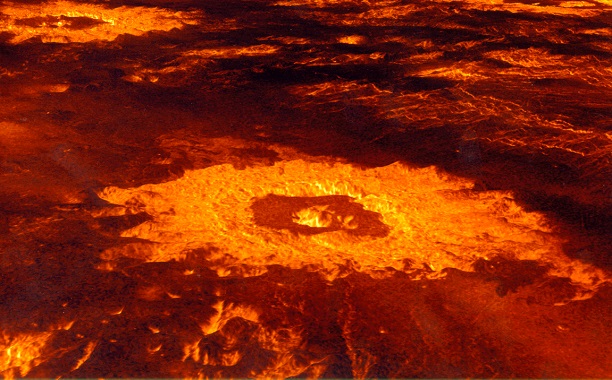While past observations such as changes in the amount of sulphur contained within the planet’s atmosphere have revealed hints of volcanism on Venus, no solid evidence supporting the existence of fresh lava has been found — that is, until now.
Data acquired from the European Space Agency’s (ESA) Venus Express probe, which discovered short-lived hot patches while it was in orbit from 2006 ’til 2014, has been attributed to lava lakes located along the Ganiki Chasma rift zone by researchers behind a new study.
The study, which was published in the journal Geophysical Research Letters, has found what the study’s authors referred to as “strong evidence” in support of active volcanic activity on the planet.
The planet, according to the study’s authors, is known to have been volcanically resurfaced during the last third of solar system history, however, a significant decrease in volcanic activity a few hundred million years ago has led modern-day researchers to question whether the planet is still volcanically active.
According to the researchers behind the new study, the study’s findings suggest that the planet “is currently geodynamically active.”
The very strong spatial correlation of the transient bright spots with the extremely young Ganiki Chasma, their similarity to locations of rift-associated volcanism on Earth, provide strong evidence for their volcanic origin and suggests that Venus is currently geodynamically active.
Lindy Elkins-Tanton with Arizona State University was quoted by New Scientist as having said that the study’s findings offer “such beautiful evidence for volcanism” on the Venus.
This is such beautiful evidence for volcanism
According to Elkins-Tanton, humans are just “a little way away from a Venus mission that would go sample the surface” and the recent discovery provides “good motivation” to see it through.
In other news, China plans to strip mine the moon for a rare isotope known as Helium-3 and is also considering landing a probe on the far side of the moon by 2020.
























